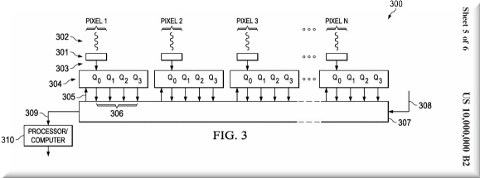

THE quality of patents at the EPO sure is declining, but what about the US? Well, in the US a lot of patents continue to be granted, but courts reject the lion's share of these (which are asserted in courts or behind closed doors, instigating potential IPRs).
"People online have long obsessed over US patent number 10,000,000, even before it was named (or even its issuance date known)."Remember the hype about US patent number 10 million? That USPTO-granted patent is likely bogus too, as per the SCOTUS-inspired Section 101/Alice. We sure think so, but the Federal Circuit and the Patent Trial and Appeal Board (PTAB) have not looked at it yet. SCOTUS itself will be busy looking into Helsinn v Teva (mostly a prior art case) -- a subject still covered by Kevin E. Noonan (Patent Docs) and other patent maximalists. "The court in Helsinn v Teva appears will rule on the issue of whether the confidential sale or license of a not-yet-patented technology or process qualifies as prior art under the AIA," Managing IP wrote yesterday.
People online have long obsessed over US patent number 10,000,000, even before it was named (or even its issuance date known). More of this dumb obsession over the mere number of patents rather than their quality/value hasn't quite stopped yet; there's still more of that (see [1-3] at the bottom -- all from this week).
"Scroll down a bit and nothing will be found except diagrams which correspond to data flow (like pseudo-code), explicitly with a computer/processor named."Some people (a)(be)mused themselves by asking what would happen if a PTAB IPR rendered it invalid, making a sort of void at that historic point in the series of granted patents. We've already mentioned a couple of times that the patent may be abstract. Someone has just said: "The 10M patent issued for a "Coherent LADAR Using Intra-Pixel Detection" last week. It wasn't deemed to be "abstract"? Weird. It seems like all examiners these days are smoking cigs at a French cafe contemplating existence. Just kidding. Pretty cool!"
So let's look at it. The USPTO made a special URL for it: https://10millionpatents.uspto.gov/docs/patent10million.pdf
"We understand that this may upset patent maximalists and the person to whom this patent was assigned, but it reads "Section 101" all over it."Scroll down a bit and nothing will be found except diagrams which correspond to data flow (like pseudo-code), explicitly with a computer/processor named. So what's the invention here really? Surely not the methods of acquisition of signals.
We understand that this may upset patent maximalists and the person to whom this patent was assigned, but it reads "Section 101" all over it.
Suffice to say, patent maximalists would rather obsess over cases which better suit their agenda. Yesterday, for instance, Kluwer Patent Blog covered this (a case from last week):
The Patent Trial and Appeal Board correctly determined that claims 1-8 of a patent for a method for drilling holes for dental implants, held by Sirona Dental Systems GmbH, were unpatentable as obvious in light of prior art, the U.S. Court of Appeals for the Federal Circuit has ruled. Further, the petitioners, Institut Straumann AG and Dental Wings Inc., failed to demonstrate that claims 9-10 of the challenged patent were unpatentable, as the Board correctly found. However, the Board erred when it denied Sirona’s contingent motion to amend the claims of its patent, and that ruling of the Board was vacated, and the dispute remanded with instructions to the Board to reconsider in light of recent precedent (Sirona Dental Systems GmbH v. Institut Straumann AG, June 19, 2018, Moore, K.).
"Goodbye software patents. Goodbye US patent number 10,000,000 as well? We might never know unless someone files an IPR or the patent goes to court."He called "nonsense" and moaned the loss of another patent from big bully IBM. Basically, almost everything perishes at the altar of PTAB and patent maximalists who are connected to patent trolls can't stand it. There was only one exception to this ("reversal today of ۤ101 rejection at PTAB").
The sidekick of Gross brought up the much older Bilski case and said: "In Bilski, J Kennedy worried about the risk that he might "create uncertainty as to the patentability of software, advanced diagnostic medicine techniques, and inventions based on linear programming, data compression, and the manipulation of digital signals.""
Why worry? It's a good thing. Goodbye software patents. Goodbye US patent number 10,000,000 as well? We might never know unless someone files an IPR or the patent goes to court. ⬆
Related/contextual items from the news:
From mainframe computers to mobile devices, from vaccines to cures, American ingenuity underwritten by the U.S. patent system has compounded over time to make our lives longer, more productive and more fulfilling.
The USPTO missed out on a significant chance to have a major impact with its choice for the 10 millionth patent, according to Matt Troyer, director of patent analytics at IP services provider Anaqua. “The news definitely made some noise,” he told IAM, “but this was a missed, one-of-a-kind opportunity to pay tribute to the acceleration of technology, celebrate 228 years of US innovation and pave the way for the next generation of inventors.” Last Tuesday the office issued patent number 10 million to Raytheon’s Joseph Marron for a method of getting real-time readings from LADAR.